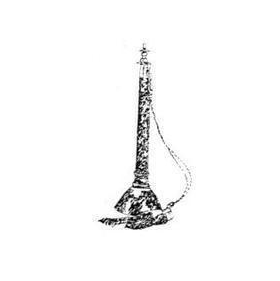long suona overview
 The long suona (pinyin: bā lā màn) is a Korean double-reed air-sounding instrument. In ancient times, it was called Daping Xiao and Taiping Xiao. Also known as suona. It is popular in Liaoning, Jilin, Heilongjiang and other provinces, especially in Yanbian Korean Autonomous Prefecture.
The long suona (pinyin: bā lā màn) is a Korean double-reed air-sounding instrument. In ancient times, it was called Daping Xiao and Taiping Xiao. Also known as suona. It is popular in Liaoning, Jilin, Heilongjiang and other provinces, especially in Yanbian Korean Autonomous Prefecture.It has a long history. In ancient times, it was used in military activities, and the suona was the main wind instrument in the army when marching to fight, charging into battle, victorious, etc. During the Three Kingdoms period of Korea (1st century to 7th century), it has been spread to the court and the people. It is one of the three musical instruments of the "Tang Dynasty" in the court. It can also be used to accompany singing and dancing. The ancient Taiping flute has a long tube and is usually made of hard jujube wood or pear wood. There is a copper bell mouth at the lower end of the tube body.
The shape is basically the same as that of the Han Suona (pictured). The tube body is made of wood or bamboo, with a height of 36.5 cm. There are eight sound holes on the tube body (seven in the front and one in the back), and the back hole is the seventh hole, located between the first six and eight holes. The bell mouth is bowl-shaped, made of copper, and the diameter of the bowl mouth is 10 cm.
In the late 1950s, the art school of Yanbian Korean Autonomous Prefecture in Jilin Province was reformed to make twenty-one hole plus key long suona. The sound is bright and beautiful. Can be used for solo, instrumental ensemble or to accompany song and dance. It is one of the important wind instruments of the Korean professional song and dance troupe.
- Chinese name:long suona
- popular area:Liaoning, Jilin, Heilongjiang and other provinces
- ancient name:Daping flute, Taiping flute
- Pinyin:cháng suǒ nà
overview of other similar instruments
- sanyanxiao overview
- Daguangxian overview
- Leiqin overview
- hahao overview
- yandundagu overview
- Han Xiaozheng overview
- Fang Xiang overview
- guanzi overview
- zhuqin (Dao Qin) overview
- zhuiqin overview
- bangzi overview
- three-stringed piano overview
- Gehu overview
- xiao overview
- xiaokonghou overview
- Konghou overview
- Sheng overview
- suona overview
- hulusi overview
- gushao overview
 渝公网安备 50010702504639号
渝公网安备 50010702504639号